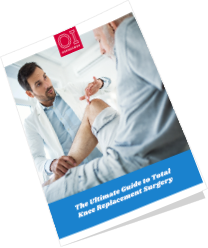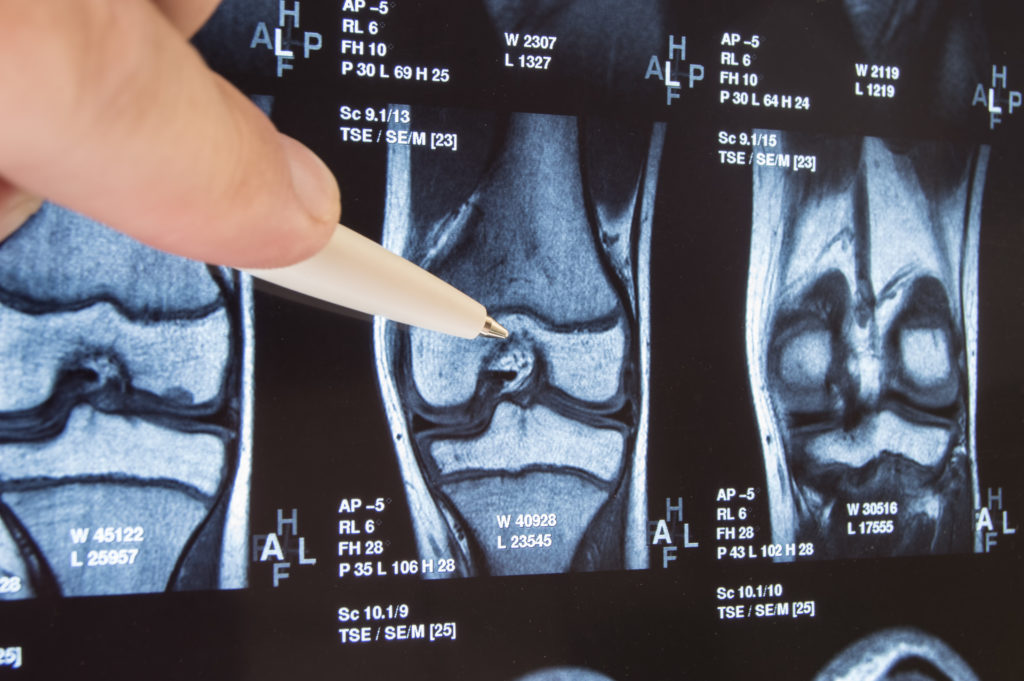This post is part of The Ultimate Guide to Total Knee Replacement
For patients looking to relieve pain from knee arthritis, total knee replacement can be an extremely effective option, but in some cases, a less invasive partial knee replacement can effectively relieve knee pain.
Read on to learn the differences between total and partial replacements and the risks and benefits of both options for knee replacement surgery.
Partial vs. total knee replacement: Which is right for you?
Knee replacement surgery is one of the most effective ways to relieve chronic knee pain caused by arthritis or injury. Depending on the severity and location of damage, your surgeon may recommend a partial or total knee replacement.
Advancements in surgical technology, such as the VELYS™ Robotic-Assisted Solution, have made it possible to perform partial knee replacements with greater precision, often leading to faster recovery times and excellent long-term results. Total knee replacements remain the standard for patients with more advanced or widespread joint damage, offering durable pain relief and improved mobility.
Robotic-assisted precision
In early 2025, OrthoIndy become the first provider in Indiana to offer the VELYS Robotic-Assisted Solution for partial knee replacements. This advanced technology uses real-time imaging and data to guide the surgeon, ensuring precise implant placement tailored to each patient’s anatomy.
“The technology allows for greater precision and accuracy during the procedure, which is a critical aspect for partial knee replacements specifically,” says Dr. Philip Huang, OrthoIndy total joint replacement surgeon. “Patients often experience a faster recovery while also improving long-term outcomes and survivorship. Barring any complications, patients can often go home the same day.
What is a partial knee replacement?
Partial knee replacement is a less invasive option for patients with arthritis or damage confined to one part of the knee. Instead of replacing the entire joint, your surgeon will resurface only the damaged area, preserving healthy bone and ligaments.
Benefits include:
- Smaller incisions and less trauma to surrounding tissues
- Faster recovery and less post-surgical pain
- A more natural-feeling knee with improved mobility
- Lower rates of medical complication
What is a total knee replacement?
Total knee replacement (TKA) is recommended when arthritis or joint damage affects multiple compartments of the knee. During the procedure, your surgeon will replace the entire joint surface with artificial components designed to restore alignment, function and stability.
Benefits include:
- Comprehensive pain relief for advanced or widespread arthritis
- Restored stability and alignment in severely damaged knees
- Long-term durability with lower revision rates for extensive damage
While recovery from total knee replacement can take longer than partial knee replacement – often three to six months – it remains a reliable solution for patients who need complete resurfacing.
Gomez’s story
The robotic-assisted option caught the attention of Martin Gomez, a Carmel resident who first noticed knee pain several years ago. What began as occasional discomfort after exercise worsened to the point that he could no longer enjoy running, playing tennis and basketball, or even walking his dogs. Injections and physical therapy provided only temporary relief.
When those treatments stopped working, Martin consulted OrthoIndy surgeon Dr. Huang, who recommended a partial knee replacement.
“When Dr. Huang told me about the VELYS Robotic-Assisted Solution and how it could be used for my partial knee replacement, I was thrilled,” says Martin. “I was really excited to be the first person in Indiana to have this platform available for my procedure. “I’m now able to walk my dogs without pain and I’m looking forward to adding more activities as I continue my recovery.”
Which option is right for you?
If knee pain is interfering with your life, OrthoIndy’s specialists can help. Our team will assess the extent of your arthritis or injury, your activity level and your overall health to determine whether a partial or total knee replacement is best for you.
Request an appointment or call 317.802.2000 to learn which treatment option is right for you.

The Ultimate Guide to Knee Pain Relief
Take control of your knee pain, learn about treatment options, and find out if surgery might be able to help you get back to normal.




